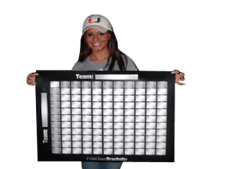Intentional Grounding Penalty in Football
What is an Intentional Grounding Penalty?
An Intentional Grounding Penalty is called when a player, typically a quarterback, throws the ball without any player having a realistic chance of catching the pass. One factor that applies is the quarterback must be under pressure and facing a decent loss of yardage. If the quarterback is able to escape out of the pocket the penalty does not apply.
Number of Yards
The NFL has a 10 yard penalty or spot of the foul, whichever is the greatest distance from the line of scrimmage. In College Football the ball is placed at the spot of the foul. In both the NFL and College there is also a loss of down and if the penalty occurs in the end zone, a safety is scored by the defense.
The Signal
When signaling the Intentional Grounding penalty the referee will have both hands open with palms facing each other about 6 inches apart. Starting at the should area the hands/arms will move diagonally toward the opposite waist/thigh area.




